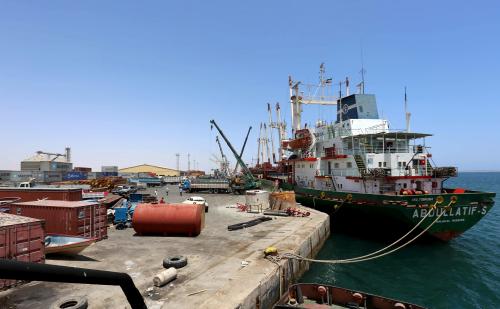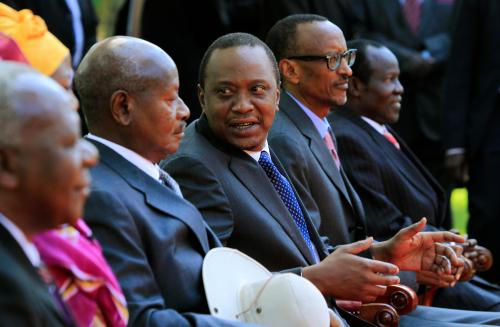The inaugural Africa Trade Week began on Monday, November 28 at the African Union (AU) headquarters in Addis Ababa, Ethiopia. The conference, organized by the AU’s Department of Trade and Industry in collaboration with the United Nations Economic Commission for Africa (UNECA), encompasses a combination of plenary and breakout sessions, high-level panel discussions, and closed meetings for invited delegates, who include members of African and international trade delegations. The theme of the conference is: “Advancing Socio Economic Structural Transformation through Intra-Africa Trade.” Consequently, many of the sessions focus on the ongoing negotiations of the Continental Free Trade Area (CFTA).
The CFTA is shaping up to be the largest free trade area in the world in terms of the population it covers. If negotiations are successful, the CFTA will involve all 54 African states, establish a single continental market for goods and services with free movement of labor and capital for over a billion people, representing a combined GDP of approximately $3.4 trillion. As the Trans-Pacific Partnership (TPP) and the Transatlantic Trade and Investment Partnership (T-TIP) have stalled, the CFTA could become the world’s newest mega-regional trade agreement.
While Africa is no stranger to regional economic communities (RECs)—there are more than eight—the CFTA is Africa’s first mega regional trade agreement (MRTA). It is expected to expand intra-African trade through better harmonization and coordination of trade liberalization and facilitation regimes across RECs and Africa generally, thus allowing for larger economies of scale across the continent, according to a 2015 UNECA report. In 2011, intra-African trade remained stubbornly low, at barely above 13 percent. The local value added was even lower at only 9 percent, suggesting that most of the value added in intra-African trade is mostly imported rather than local (see Figure 1).
Figure 1: Share of intra-African trade versus share of regional value added in intra-regional trade, by main region, 2011 (%)
 Source: WTO, International Trade Statistics (2012); “Economic Report on Africa 2015: Industrializing through Trade,” United Nations Economic Commission for Africa.
Source: WTO, International Trade Statistics (2012); “Economic Report on Africa 2015: Industrializing through Trade,” United Nations Economic Commission for Africa.
Unfortunately, while tariffs within the member states of RECs have lowered, tariffs between the RECs remain stubbornly high. According to a UNECA report, “global protection within Africa averages about 8.7 percent but only 2.5 percent to the rest of the world. For strictly industrial products the difference is even starker—9.0 percent and 2.3 percent.” The result? It is often cheaper for African countries to export to a foreign market than to an African counterpart. The CFTA aims to make African economies more competitive internationally, as regional markets are easier to penetrate and have less restrictive import standards than European or North American markets. The United Nations Conference on Trade and Development (UNCTAD) estimates that if the CFTA can successfully open up regional markets to African goods and services in a full trade liberalization regime, the share of intra-African trade with respect to total African trade can rise from 10.2 percent to 15.5 percent within a decade. Moreover, with infrastructure investments and further trade facilitation measures, the share may further increase from 15.5 percent to approximately 22 percent, totaling over $80 billion (see Figure 2).
Figure 2. Changes in intra-African trade following the implementation of the CFTA alone versus CFTA implementation with trade facilitation measures, by main sector, 2022 ($ billion)

Source: “Economic Report on Africa 2015: Industrializing through Trade,” United Nations Economic Commission for Africa
The CFTA is a major pillar of the African Union’s Agenda 2063, a plan to mobilize Africa’s vast resources to foster strong economic growth and political stability. Other noteworthy initiatives include plans for an African Union e-passport. If the African Union is successful, the CFTA could break down barriers between African countries and create a single African market, which could not only reshape the continent, but also has implications for stakeholders outside of Africa, as noted by Prudence Sebahizi, the lead technical advisor on the CFTA to UNCTAD in a presentation given to a joint ECOWAS/UNCTAD consultation.
Junaid Belo-Osagie contributed to this post.






Commentary
Figures of the week: Trade Week Africa and the Continental Free Trade Area
November 30, 2016